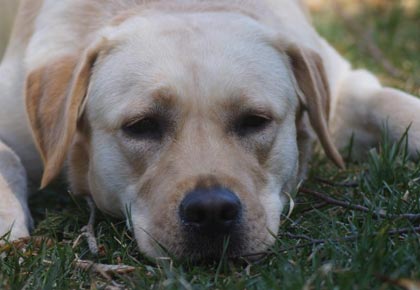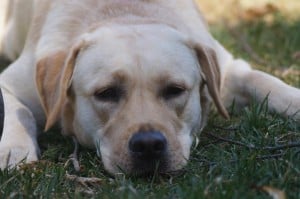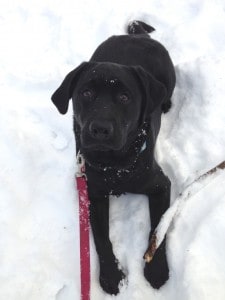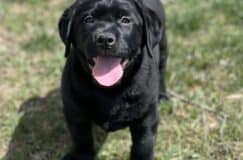Hip Dysplasia: Treatment Options
While we strive to not only eliminate this issue from our bloodlines, genetically, we also strive to educate new puppy owners on environmental preventative measures. (Hip Dysplasia in Labradors: What can I do to prevent it?) However, if you are finding yourself with this diagnosis for your labby, we’d like to give you some hope still!
The first thing you should know, is that you can not have a conclusive diagnosis until the dog is 2 years old. The OFA won’t even certify your dog’s hips and elbows until that time. The joints are still developing, loosening, and moving until then. (This is why you should wait to spay/neuter until that age: When should I spay/neuter my puppy?)
Nevertheless, if you are facing dysplasia in your lab… there is hope!
Here are some tips and advice to help your dog with dysplasia…
- Our first recommendation is to put your dog on a supplement called NuJoint Plus (Order NuJoint). NuJoint is not only anti-inflammatory, but contains glucosamine and chondroitin, great for bone and joint growth! (This is great for any senior dog experiencing regular arthritis, too!)
___ - You also want to be sure that you’re limiting the dog’s exercise. As we said in our other post, swimming is a GREAT low impact exercise… especially for a dog who already is diagnosed with dysplasia. Not to mention it can be very soothing for any joint pain. “The right amount of exercise helps to maintain muscle tone and strength and stabilizes the unstable dysplastic joint.” (OFA) Limit excessive exercise in pups up until 24 mos old to keep from putting undue strain on developing joints and ligaments (i.e jumping, leaping, slippery stairs) Some pups will experience periods of slight pain while growing, this is called “Pano” (basically, growing pains…and should be treated as recommended in the beginning of this paragraph.) Pano WILL pass.
___ - Weight management is especially important if you already know that your dog is dysplastic. Excess weight puts unneeded pressure on the joints and can cause even more pain and discomfort. Talk with your vet and make sure that your lab is at a good, healthy weight (You should be able to feel the ribs but not see them. Your dog should have a defined waist line when gazing at them from above.)
___ - Another factor that most people don’t think about is the temperature of the environment the dog is in. A warm environment is more comfortable for a dog with joint problems. As with people, cold and damp weather is the worst for joint pain. You can also try applying controlled heating pads (be very careful not to burn the dog! I do not recommend electric heating pads), and a soft bed to lay on. (Therapeutic beds with memory foam are awesome!)
___
___ - For information on possible drug therapy or surgical intervention, see the OFA website (referenced for this article) at www.offa.org.
Click here to read our first post about Hip Dysplasia prevention!
Related Articles
DO NOT BUY A PUPPY OR DOG UNTIL YOU READ THIS!!! (Donna\’s full-length memoir/Labrador History)
Why your Lab should stop biting and jumping on–GET THIS!!–DAY #1!!!
Purebred Thefts on the Rise! (and in the news)
Does your Pet Shampoo contain these harmful chemicals?
Buyer Beware
Am I crazy to want two puppies??










6 Comments